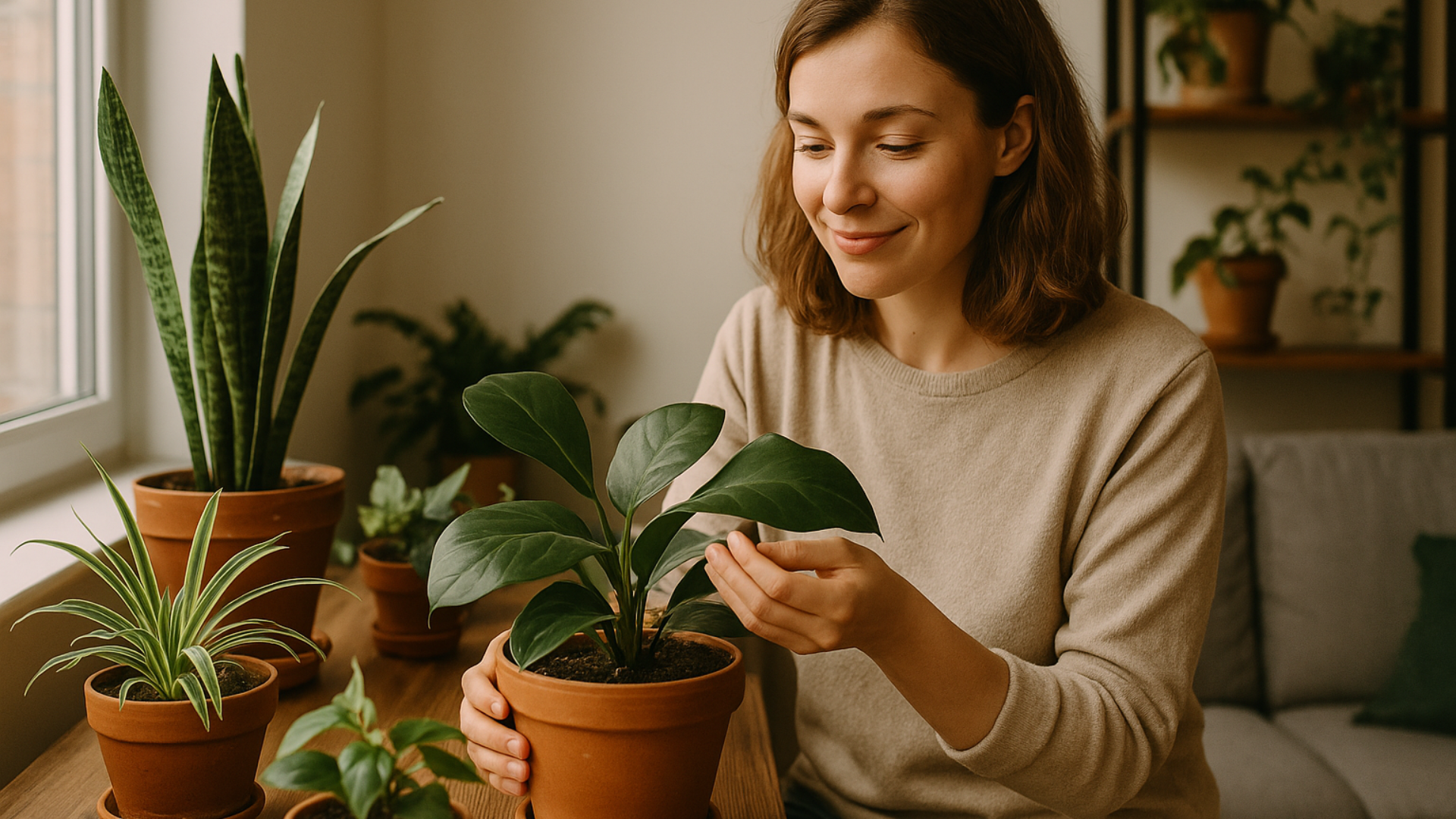Taking care of plants at home, especially in small spaces like apartments, is not just a hobby—it’s a gentle and rewarding practice that connects you to nature, even within four walls. If you’re starting this journey, this guide will walk you through everything you need to know, with kindness and practicality, so that your apartment becomes a little greener and a lot more alive.
Why Caring for Apartment Plants Is So Popular Today
In today’s fast-paced and highly digital world, people are rediscovering simple pleasures. Taking care of plants is not about trends—it’s about finding moments of peace, connection, and beauty within our homes. More than decoration, plants offer us a relationship: they need our attention, patience, and care. In return, they reward us with beauty, growth, and a healthier environment.
Plants improve air quality, add calmness to our routines, and give us small, daily reasons to pause and appreciate something living.
Choosing the Right Plants for Your Apartment
Start with Easy and Forgiving Plants
If you’re a beginner, avoid complex plants that require specialized environments. Instead, focus on plants known for being resilient and adaptable to apartment living:
- Snake Plant (Sansevieria): Thrives in low light and requires minimal watering.
- Pothos (Epipremnum aureum): Beautiful vines that adapt to various conditions.
- ZZ Plant (Zamioculcas zamiifolia): Almost impossible to kill, perfect for starters.
- Spider Plant (Chlorophytum comosum): Great for hanging spaces, low maintenance.
Understand Your Apartment’s Environment
Observe how light moves through your home during the day. Some plants thrive near bright windows; others prefer indirect light. Note the airflow, humidity, and temperature patterns—these factors matter.
If possible, arrange your plants in spaces where they will feel comfortable: kitchens, bathrooms, living rooms, and home offices are all great spots depending on the plant’s needs.
Establishing a Simple, Gentle Routine
Light
Place each plant according to its preference. South-facing windows generally offer the most light; north-facing ones, the least. Rotate plants every few weeks so all sides receive equal exposure.
Watering
Overwatering is the most common mistake. Always check the soil moisture with your finger: if the top inch feels dry, it’s time to water. Remember, most apartment plants prefer slightly dry soil over constantly wet roots.
Feeding
You don’t need to overcomplicate this. A gentle, balanced liquid fertilizer applied every few months will be enough for most indoor plants.
Cleaning
Dust settles on leaves and can block light. Wipe leaves gently with a damp cloth every few weeks—this is also a great moment to check for pests or signs of stress.
The Emotional Benefits of Plant Care
A Relationship Beyond Decoration
Plants grow. They change slowly, subtly, inviting us to notice small details. Watching new leaves unfold can bring surprising joy. Realizing you’ve created life in your living space fosters a unique sense of fulfillment.
Mindful Moments
Watering plants can become a moment of mindfulness: you pause, observe, and act with intention. These quiet rituals bring calm, grounding us in the present moment.
A Gentle Lesson in Patience
Plants teach us about time. Growth is not instant, but gradual. This reminder counters the urgency of modern life and invites a softer pace into our homes.
Common Mistakes and How to Avoid Them
Overwatering
Signs: yellowing leaves, soggy soil, moldy smells.
Solution: Let the soil dry between waterings; use pots with drainage holes.
Underwatering
Signs: drooping, dry leaves, crispy edges.
Solution: Create a regular watering schedule; keep plants within easy sight.
Too Much Direct Sunlight
Signs: scorched leaves, faded color.
Solution: Move the plant to indirect light, use sheer curtains to soften sunlight.
Ignoring Seasonal Changes
Plants grow slower in colder months and need less water. Adjust care routines with the seasons.
Creating Your Own Plant Corner
You don’t need a garden to cultivate green joy. Even a single shelf or small table can become a sanctuary for you and your plants. Grouping plants together can also create a microclimate where humidity supports them collectively.
Think of textures, colors, and heights when arranging. Mix leafy greens with trailing vines and perhaps a flowering plant for variety.
Building Confidence Over Time
Start small. As you gain confidence and learn to read the signs your plants give, you’ll naturally expand your collection. Every success—even reviving a wilted plant—is a tiny victory that builds your confidence and connection with nature.
What to Do When Things Go Wrong
Even the most experienced plant lovers lose a plant now and then. Don’t feel discouraged. Instead, reflect on what you’ve learned. Every mistake teaches you how to do better next time.
Sometimes a plant outgrows your apartment or its needs simply change. It’s okay to gift it to someone who can give it what you can’t. This is part of the cycle.
Your Apartment, Your Green Refuge
Your apartment doesn’t need to resemble a jungle to bring you the benefits of plants. A few well-cared-for pots can change the energy of a space, bringing life, beauty, and a quiet sense of joy. As you tend to your plants, you’re also tending to yourself—creating habits of patience, observation, and gratitude.
Final Thought: Your Journey with Plants is Just Beginning
You don’t need to aim for perfection. Let this journey be about discovering how nature, even in small doses, can bring warmth, balance, and growth into your daily life.
